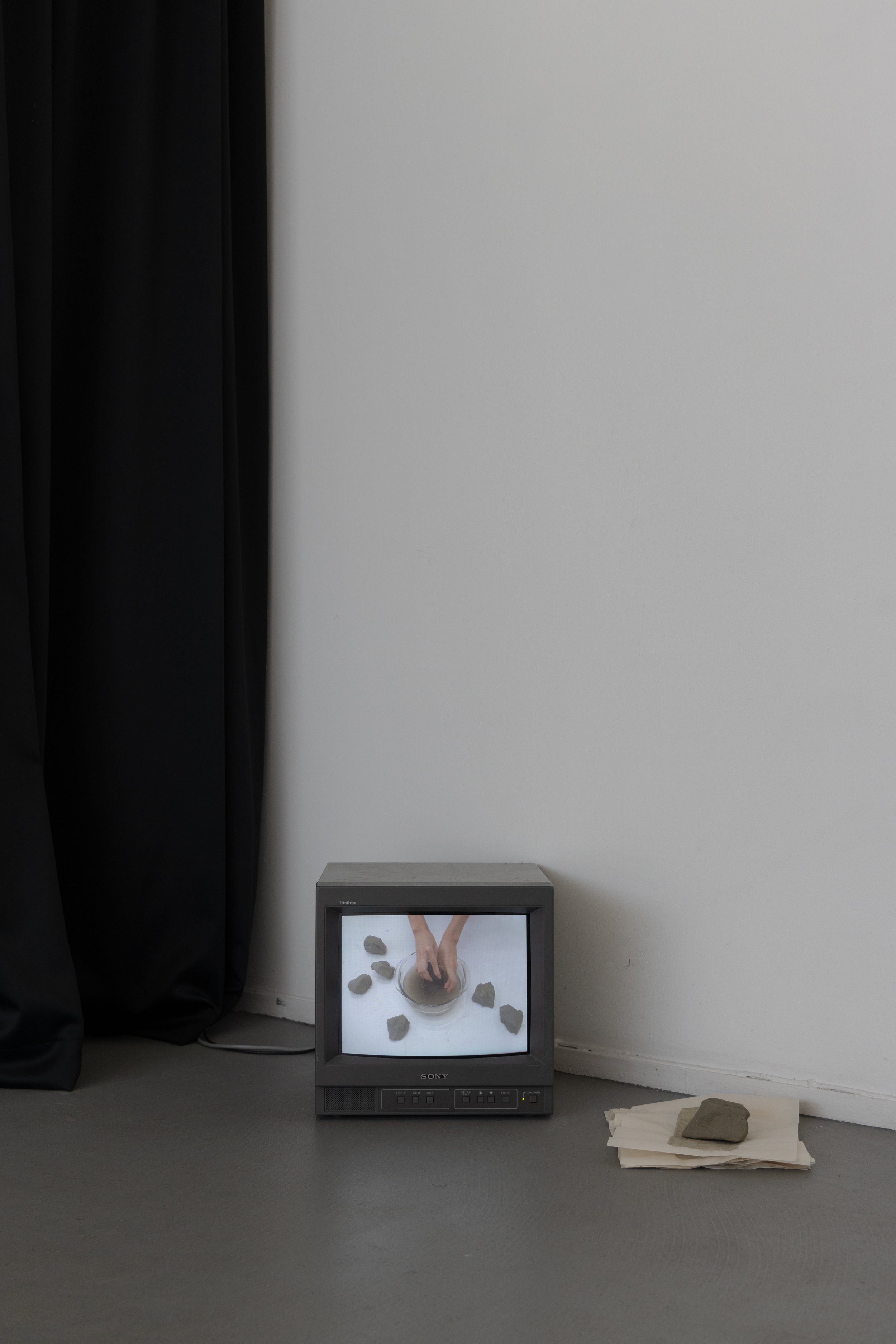Notes On: Crypto doulas
Connie Brown on Simon Denny and Karamia Müller’s Creation Stories, Michael Lett, 6 August – 10 September 2022; and Gus Fisher Gallery, 6 August – 22 October 2022.
In Creation Stories Simon Denny and Karamia Müller bring together their respective practices in contemporary art and architecture to search out the gridlines of familial, technological, cultural, corporate connectedness that bisect time and space, the artists’ personal histories, and the geopolitical entanglements of Germany and Sāmoa. Works from Buck Nin, Shane Cotton, Daniel Boyd, Stella Brennan, Leah Jaynes Karp, and more, are curated into the two spaces the exhibition sits across—Michael Lett and Gus Fisher Gallery; alongside the artists’ collaborative sculptures mapping blockchain technologies and colonial occupation in the Pacific into sacred geometries using cable harnessing.
Their methodology, particularly in the cable harness works, bears a resemblance to that of Forensic Architecture, whom Müller has worked with in the past as project lead of Violent Legalities, presented at Adam Art Gallery Te Pataka Toi in 2020. Forensic Architecture’s projects serve an investigative and evidential function; they uncover and bear witness to state and industrial violences that might otherwise bury or absolve themselves within the traditional justice system. But Denny and Müller describe Creation Stories as portraiture, not forensics, and it bears asking what remains when that function changes.
The exhibition is at its best when duped by itself and resigned to the inadequacy of the portrait it has produced. In these moments, it takes a break from the totality to look more closely at single relationships, sites and artefacts. Leafā Wilson and Olga Krause’s intimate black and white ink pen sketches and Müller’s technical drawing of a Sāmoan domestic dwelling gesture to a liquidy, amniotic element that makes these spaces in some way unmappable, at least within the conventions of architectural draughtsmanship.
Creation Stories effectively brings questions of family, heritage and creativity into the same room as multinational corporations and their enterprises; where the alternative is to pretend that those things exist separately. But are the flat field of the map and the cable affixed to a regulator the best tools for representing the massive inequalities and metabolic surges of social life? And is connectivity the same as connection? Water—it is worth remembering—is as conductive as wire, even if its currents are harder to route and control.
Sarah Friend, Lifeforms (detail), 2021. Courtesy of the artist
Sarah Friend, Lifeforms, 2021. Courtesy of the artist. Installation view, Gus Fisher Gallery, Tāmaki Makaurau, August 2022
Simon Denny and Karamia Müller, Creation Stories. Installation view, Gus Fisher Gallery, Tāmaki Makaurau, August 2022
Simon Denny and Karamia Müller, Creation Stories. Installation view, Gus Fisher Gallery, Tāmaki Makaurau, August 2022
Simon Denny and Karamia Müller, Creation Stories. Installation view, Gus Fisher Gallery, Tāmaki Makaurau, August 2022
Simon Denny and Karamia Müller, Creation Stories. Installation view, Gus Fisher Gallery, Tāmaki Makaurau, August 2022
Ryan Kuo, Family Maker, 2017 – 2018. Installation view, Gus Fisher Gallery, Tāmaki Makaurau, August 2022. Courtesy of the artist and The Current Museum
Dale Harding, Digging Stick (detail), 2019, shovel, blue pigment. Installation view, Gus Fisher Gallery, Tāmaki Makaurau, August 2022. Courtesy of the artist and Milani Gallery, Brisbane
Simon Denny and Karamia Müller, Creation Stories. Installation view, Gus Fisher Gallery, Tāmaki Makaurau, August 2022
Leah Jaynes Karp, Aa Bb Cc Flowers (detail), 1982. Courtesy of the artist and The High Museum, Atlanta; Gift of Lucinda Bunnen for the Bunnen Collection
Simon Denny and Karamia Muller, Creation Story Cable Harness 3 (detail), 2022. Courtesy of the artists and Michael Lett
Buck Nin, Putahi Incandescent, 1968. Courtesy of Waikato Museum Te Whare Taonga o Waikato
Simon Denny and Karamia Müller, Creation Stories. Installation view, Gus Fisher Gallery, Tāmaki Makaurau, August 2022
Simon Denny and Karamia Müller, Creation Stories. Installation view, Gus Fisher Gallery, Tāmaki Makaurau, August 2022
Shane Cotton, Pararaiha #1 (detail), 2022. Installation view, Gus Fisher Gallery, Tāmaki Makaurau, August 2022. Courtesy of the artist and Gow Langsford Gallery
Stella Brennan, Tuesday, 3 July 2001, 10:38am, 2001 – 2002. Installation view, Gus Fisher Gallery, Tāmaki Makaurau, August 2022. Courtesy of the artist and Chartwell Collection, Auckland Art Gallery Toi o Tāmaki
Leafā Wilson and Olga Krause, Untitled, 2008. Installation view, Gus Fisher Gallery, Tāmaki Makaurau, August 2022. Courtesy of the artist
Salle Tamatoa, from the series “Koe Puhala Foou he Talatalai Moe Lalanga,” 2020. Installation view, Gus Fisher Gallery, Tāmaki Makaurau, August 2022. Courtesy of the artist
Simon Denny and Karamia Müller, Creation Stories. Installation view, Michael Lett, Tāmaki Makaurau, August 2022
All photos: Sam Hartnett
































Connie Brown on Zoe Thompson-Moore’s Open-field; RM Gallery, 23 November - 17 December